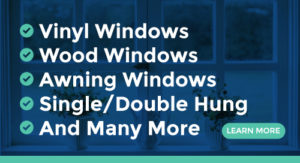
The Window Replacement Checklist: Key Signs Your Home Needs an Update
Windows play a crucial role in the overall comfort, energy efficiency, and aesthetics of your home. Over time, however, even the most durable windows will begin to show signs of wear and tear, which may necessitate replacement. In this blog, we will explore the key signs that it’s time to update your home with new windows, and we will provide helpful tips on how to navigate the window replacement process.
Compare PricesFeeling the Draft: Poor Insulation and Air Leaks
One of the primary functions of windows is to provide insulation and prevent drafts. If you notice cold air seeping through your windows during the winter or warm air during the summer, this may be an indication that your windows are no longer effectively insulating your home. Drafty windows can lead to increased energy bills, as your heating and cooling systems have to work harder to maintain a comfortable temperature.
Window Operation Woes: Difficulty Opening and Closing
Windows should open and close smoothly, providing easy access to fresh air and ventilation. If you find it difficult to open or close your windows, or if they are frequently getting stuck, this could be a sign that the window frames have warped or the hardware has deteriorated. Struggling with stubborn windows can be frustrating, and in some cases, even pose a safety hazard during emergencies.
Condensation Concerns: Moisture Buildup Between Panes
Double-paned windows have a layer of insulating gas between the two glass panes to improve energy efficiency. Over time, the seals around the panes can fail, allowing the insulating gas to escape and moisture to seep in. If you notice condensation or fogging between the panes of your windows, this is an indication that the seals have failed, and it may be time for a window replacement.

Fading Beauty: Visible Signs of Wear and Tear
Aesthetic appeal is an essential factor to consider when evaluating the need for window replacement. Windows that are chipped, peeling, or showing other visible signs of wear and tear can detract from the overall appearance of your home. Replacing worn-out windows can not only improve your home’s curb appeal but also enhance its value.
Skyrocketing Energy Bills: Decreased Energy Efficiency
Old, inefficient windows can contribute to higher energy bills by allowing heat to escape during the winter and enter during the summer. If you’ve noticed a steady increase in your energy costs, it may be time to consider replacing your windows with more energy-efficient models. Modern windows come with improved insulation and advanced features, such as low-emissivity coatings, which can significantly reduce your energy consumption.
Compare PricesNavigating the Window Replacement Process
Once you’ve identified the signs that it’s time for new windows, it’s essential to approach the replacement process with a plan. Here are some helpful tips to ensure a smooth window replacement experience.
- Research Your Options
Before committing to a window replacement, take the time to research the various materials, styles, and energy-efficiency ratings available on the market. Consider factors such as your home’s architectural style, your local climate, and your budget to choose the best windows for your needs.
- Hire a Reputable Installer
Selecting the right window installer is just as important as choosing the right windows. Look for experienced, licensed professionals with positive reviews and a proven track record of quality workmanship. A skilled installer can make all the difference in the longevity and performance of your new windows.
- Prepare Your Home
Before the installation begins, take steps to prepare your home for the window replacement process. Clear the area around your windows, remove window treatments, and disable any security sensors connected to the windows. This will help ensure a smooth and efficient installation process.

Recognizing the signs that it’s time for window replacement is crucial to maintaining your home’s comfort, energy efficiency, and aesthetic appeal. By understanding the key indicators and following the tips above, you can ensure a smooth window replacement experience that will enhance your home for years to come.
Compare PricesTop Window Replacement Options
There are numerous types of window replacement options available on the market, each with its own set of advantages and disadvantages. In this section, we will discuss the top window replacement options to help you make an informed decision based on your needs and preferences.
Vinyl Windows
Vinyl windows are a popular choice for their durability, low maintenance, and energy efficiency. They come in a variety of styles and colors, making it easy to find the perfect match for your home. Additionally, vinyl windows are more budget-friendly compared to other window materials.
Wood Windows
Wood windows offer a classic and timeless look, making them a favorite among homeowners who value aesthetics. They provide excellent insulation and can be customized with various stains and finishes. However, wood windows require regular maintenance, such as painting or staining, to prevent rot and warping.
Fiberglass Windows
Fiberglass windows are known for their strength, durability, and energy efficiency. They resist warping, rotting, and corrosion, making them an excellent low-maintenance option. While fiberglass windows can be more expensive than vinyl or wood, their longevity and low maintenance requirements often make them a cost-effective choice in the long run.
Aluminum Windows
Aluminum windows are lightweight, strong, and low maintenance. They are an ideal choice for modern or industrial-style homes, and they can be customized with various finishes. However, aluminum windows are less energy-efficient compared to other window materials, as they are more prone to heat transfer.

The Average Cost of Replacement Windows
The cost of replacement windows can vary widely depending on factors such as window materials, style, size, and installation requirements. On average, the cost of replacement windows ranges from $300 to $1,000 per window, including installation. Here’s a breakdown of the average costs for some popular window materials:
- Vinyl windows: $300 – $800 per window, including installation
- Wood windows: $500 – $1,200 per window, including installation
- Fiberglass windows: $600 – $1,000 per window, including installation
- Aluminum windows: $400 – $900 per window, including installation
Keep in mind that these are average costs, and the actual price of your window replacement project may vary based on factors such as regional labor rates, the complexity of the installation, and any additional features or customizations.
When considering the cost of replacement windows, it’s essential to view the investment as a long-term improvement to your home. High-quality, energy-efficient windows can save you money on your energy bills, improve your home’s comfort, and increase its overall value. By understanding the signs that it’s time for window replacement, researching your options, and planning for the associated costs, you can confidently navigate the window replacement process and enjoy the many benefits of updated windows in your home.
Compare Prices

Leave a Reply